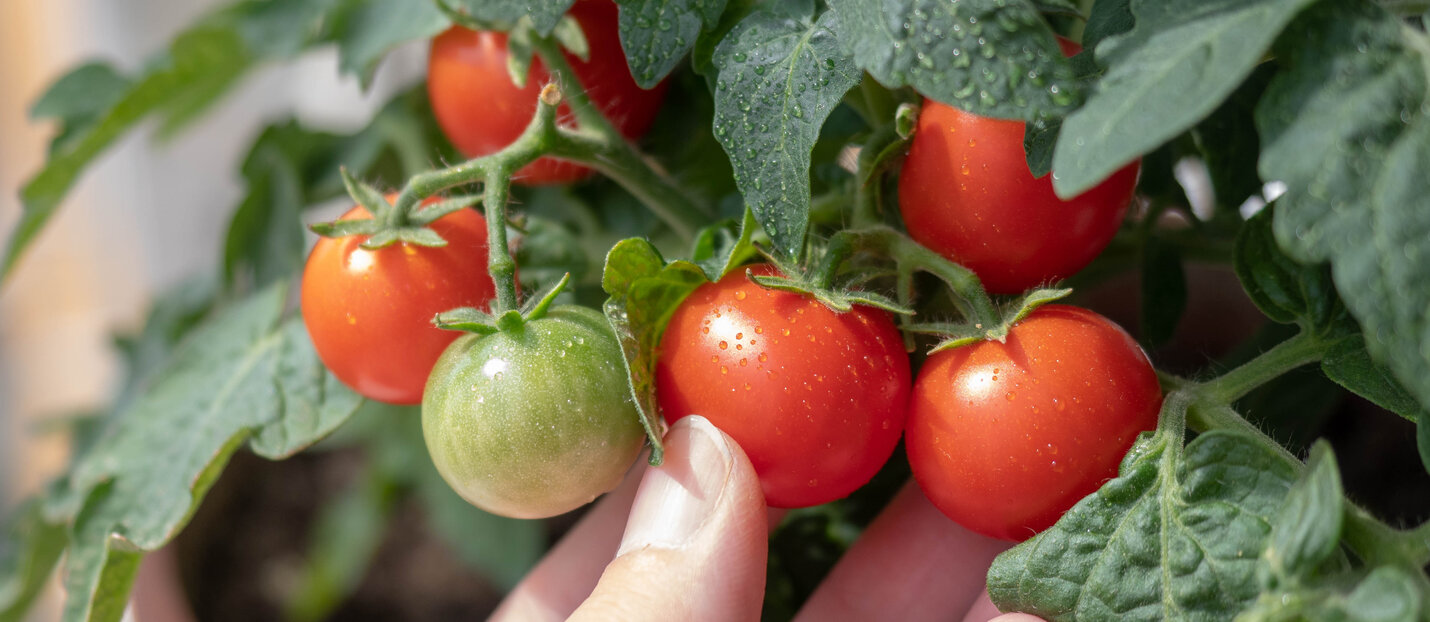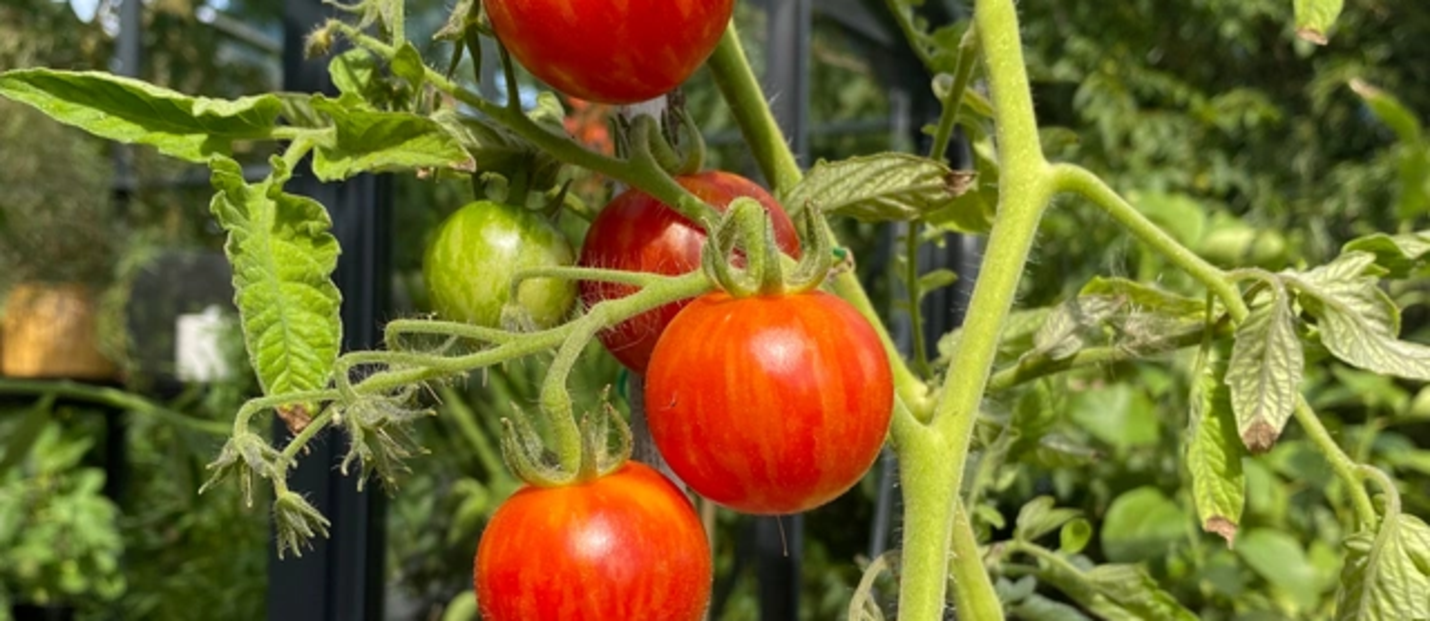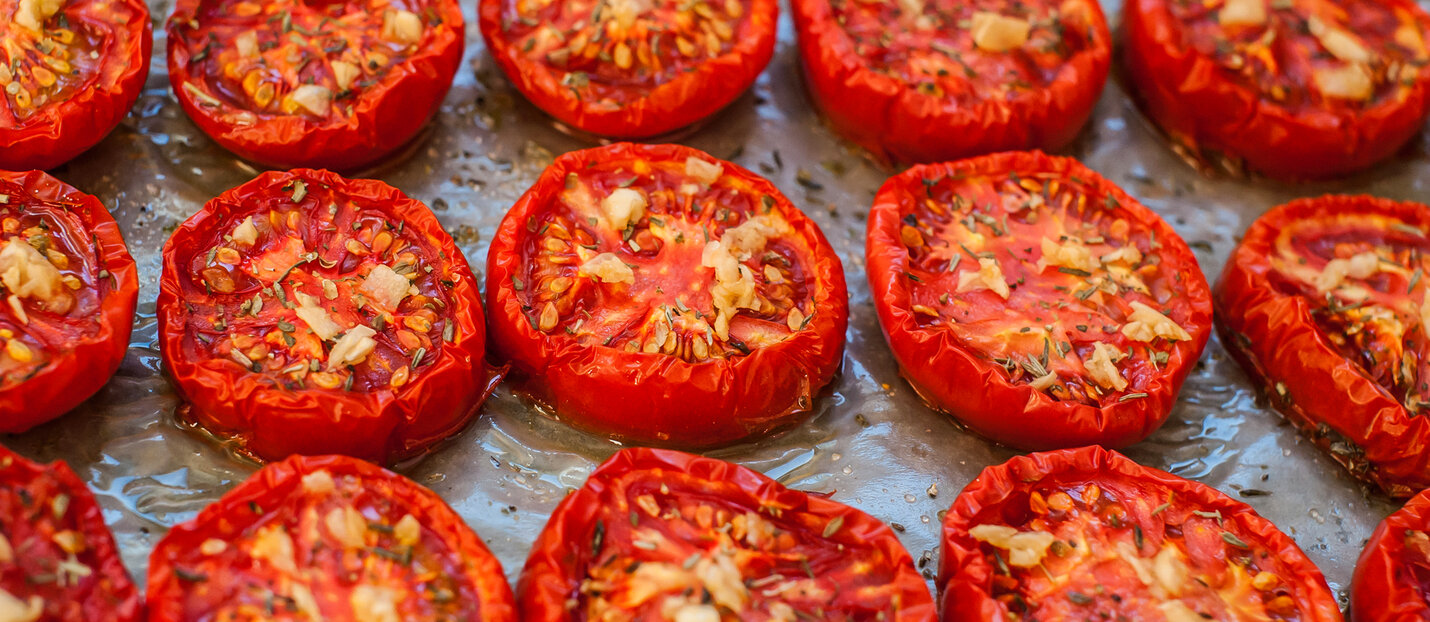Written by Spirekassen 27 Jul 2023 11:41
The taste of tomatoes
Homegrown tomatoes taste the best, but why is that? What should we do to achieve the best flavour in our tomatoes? Almost all of us have a personal favourite tomato variety, where we believe the taste is absolutely fantastic. As a trained horticulturist, I have worked at a plant nursery, specialised in selling tomato plants to private customers. Therefore, I know that there are a multitude of flavours, textures, and aromas. In this article, I have tried to gather important information for those of you, who want to grow better tomatoes than their neighbours.
During the creation of this article, I have also spoken with a professional gardener specialised in growing tomatoes and obtained the best tips and tricks.
What is tomato flavour?
The flavour of a tomato is formed by three elements: the content and ratio of different types of acids, sugars, and aroma compounds. We taste salt, sour, sweet, and bitter on our tongues. The combination of these four elements contributes to the taste experience. The rest of our taste experience is created through our sense of smell. Tomatoes contain unique aroma compounds that contribute to their flavour.
In other words, tomato flavour consists of the elements:
- Acids, sugars, and aroma compounds
- We use both our sense of taste and sense of smell to create the flavour of tomatoes.
- Despite the intense flavour, 90% of a tomato fruit consists of water.
What creates good tomato flavour?
There are many factors that are crucial for a good, intense, and long-lasting tomato flavour. In general, it involves variety selection, growing conditions, amount of sunlight, fertiliser, water, harvest timing, and proper fruit storage after harvesting.
Differences in tomato varieties
Tomatoes can be broadly divided into two main groups:
- Heirloom, which are old, open-pollinated varieties.
- F1 hybrids, which are varieties crossbred for certain characteristics.
Heirloom tomatoes are generally soft and release all their flavour compounds quickly when eaten. Therefore, they provide a stronger taste experience. Many of the varieties we grow in hobby greenhouses often have cracks in the skin. It is unfortunate, but delicate thin-skinned fruits also offer a much better taste.
F1 hybrids are bred varieties. They have firmer skin, which releases flavour compounds more slowly. In the tomato industry, a thicker skin is preferred as it makes the fruit more robust for machine packing and other handling. However, the tomato variety 'Sungold' F1 is an exception to the rule. 'Sungold' F1 tastes wonderful and has won several taste competitions because, unlike most other F1 varieties, it has a relatively thin skin.
Growing conditions and tomato flavour
Just like soft drinks, the more water a tomato contains, the less flavour it has. The same happens if you grow tomatoes in self-watering containers. In such cases, the plants essentially have access to water all the time, which can compromise the intense flavour. Therefore, you will notice that tomatoes grown in self-watering containers have less flavour compared to those grown in soil.
Fertiliser plays a central role in tomato flavour. Several cultivation experiments have shown that tomatoes fertilised with synthetic fertilizers have higher levels of acids and sugars compared to organically grown tomatoes, which are fertilised with less concentrated fertilisers. Most organic fertilisers are usually less concentrated than synthetic fertilisers.
Sunlight and tomato flavour
The sun is the basis for photosynthesis. When the plant undergoes photosynthesis during the day, sugar is produced and stored in the tomato fruit, contributing to its flavour. Too much sun and heat in the greenhouse stress the tomato plants, and that can easily be seen when the tomato flower is not properly pollinated and withers. Therefore, it is important to have good shade in the greenhouse. The best option is to have shade curtains that can be drawn back when it is cloudy. On cloudy days, it is important for the tomato plant to continue producing a lot of essential sugar for tomato flavour. Stay away from shading paste, as it cannot be removed on cloudy days.
Harvest timing is crucial
A tomato should be picked as late as possible and as ripe as possible to have the best flavour. This is when the sugar content in the tomato is highest.
Storage affects tomato flavour
You are probably familiar with this...
In late summer, you have an overproduction of tomatoes, and to make them last as long as possible, you put them in the refrigerator. That is essentially the worst thing you can do if you enjoy tomatoes with a strong flavour.
The tomato plant originates from tropical regions, and this climate should be replicated if you want the most flavourful tomatoes. Today, we know that cooling tomatoes below 12 degrees Celsius stops certain biological processes that greatly impact tomato flavour. Even if the tomatoes are brought back to room temperature and warmer conditions, the damage is done. The good flavour is never restored.
In simple terms, tomatoes lose their flavour when cooled in the refrigerator. The sugar content remains the same during cooling, but the aroma compounds are reduced by more than half.
Best tips for good flavour
- Avoid using self-watering containers.
- Use shade curtains.
- Choose fertiliser carefully.
- Harvest as late as possible.
- Only pick fully ripe tomatoes.
- The best storage temperature for tomatoes is around 15 °C.
- Refrigeration does not extend the shelf life.
- Smaller tomatoes have a more intense flavour than larger tomatoes.
Recipe: SUN-DRIED TOMATOES
Towards the end of summer, there comes a period when the greenhouse yields more tomatoes than you can eat. A good way to make use of these splendid tomatoes is by drying them. They are called sun-dried tomatoes, and you can actually dry tomatoes in intense summer sun if the weather permits.
However, you have much more control over the process in an oven or a food dehydrator. A tomato consists of over 90% water. When drying tomatoes, almost all of the water is removed, leaving behind dry matter and a delicious concentration of flavour compounds.
It is easiest to dry cherry tomatoes, but you can also dry slices of larger tomatoes. Cut the tomatoes in half from the stem end and place them side by side on baking paper on a baking tray. Put them in the oven for 5 to 6 hours at 60 °C. It is best to use the convection setting on your oven while the door stays slightly open. Alternatively, you can use a food dehydrator. The drying time in a dehydrator depends on the power of the machine.
- Halve cherry tomatoes.
- Place them side by side on baking paper on a baking tray.
- Sprinkle the tomatoes with freshly chopped herbs (optional).
- Dry them at 60 °C for 5-6- hours using the convection setting on your oven while the door stays slightly open.
- Clean and sterilize jars.
- Rinse the jars with a food preservative.
- Put the dried tomatoes in the jar.
- Add a good olive oil.
The dried tomatoes can be frozen and stored for a long time in the freezer. They can be used as snacks, in salads, and other dishes. It is also possible to put the dried tomatoes in clean, sterilized jars rinsed with a food preservative fluid. Pour a generous amount of olive oil over the tomatoes. The jar should be stored in a cool, dark place and can last for a long time.
Kilder:
https://videnskab.dk/naturvidenskab/derfor-smager-tomater-ikke-som-foer-i-tiden/
https://pure.au.dk/portal/da/persons/carlotto-ottosen(61b29de7-e282-491a-b3e0-a58ab530b807).html
https://videnskab.dk/naturvidenskab/derfor-smager-tomater-af-pap/
https://www.ncbi.nlm.nih.gov/gene/834442
Gert Larsen, gardener specialised in growing tomatoes.
Bent Løschenkohl, horticulturist.






